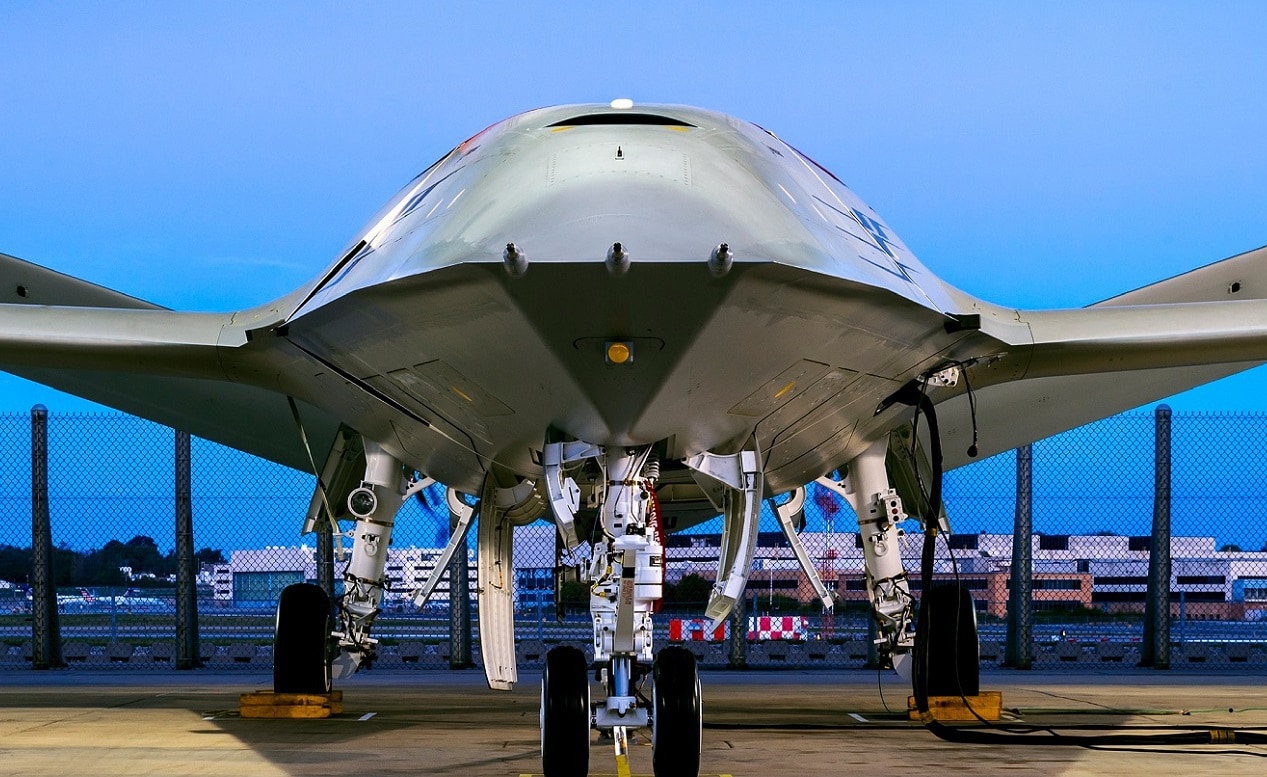Key Points and Summary: China’s recent stealth aircraft unveilings have sparked debate, but the U.S. remains far ahead in aviation technology.
-While China tests its third and fourth stealth jets, the U.S. has multiple new stealth platforms in flight, including the B-21 Raider, NGAD prototypes, and drone wingmen like the XQ-67A and MQ-25 Stingray. These aircraft feature next-gen avionics, AI integration, and unmatched range and stealth capabilities.
-The U.S. military’s deep expertise in stealth innovation, dating back to the 1960s, ensures its continued air superiority. Despite the hype, China has a long way to go before it can truly challenge American dominance in the skies.
B-21 Raider, NGAD & More: The Future of U.S. Air Dominance
In December, China revealed two new stealth aircraft in testing to the world, and immediately, the internet started acting as though this revelation meant China had surpassed the US in aviation technology.
But despite the pervasive hyperbole of the internet content machine, this take doesn’t have much basis in fact.
These new aircraft represent the 3rd and 4th stealth aircraft China has ever put into public testing, whereas the U.S.’ history of stealth aircraft development dates back to the early 1960s with Boeing’s Model 853-21 Quiet Bird.
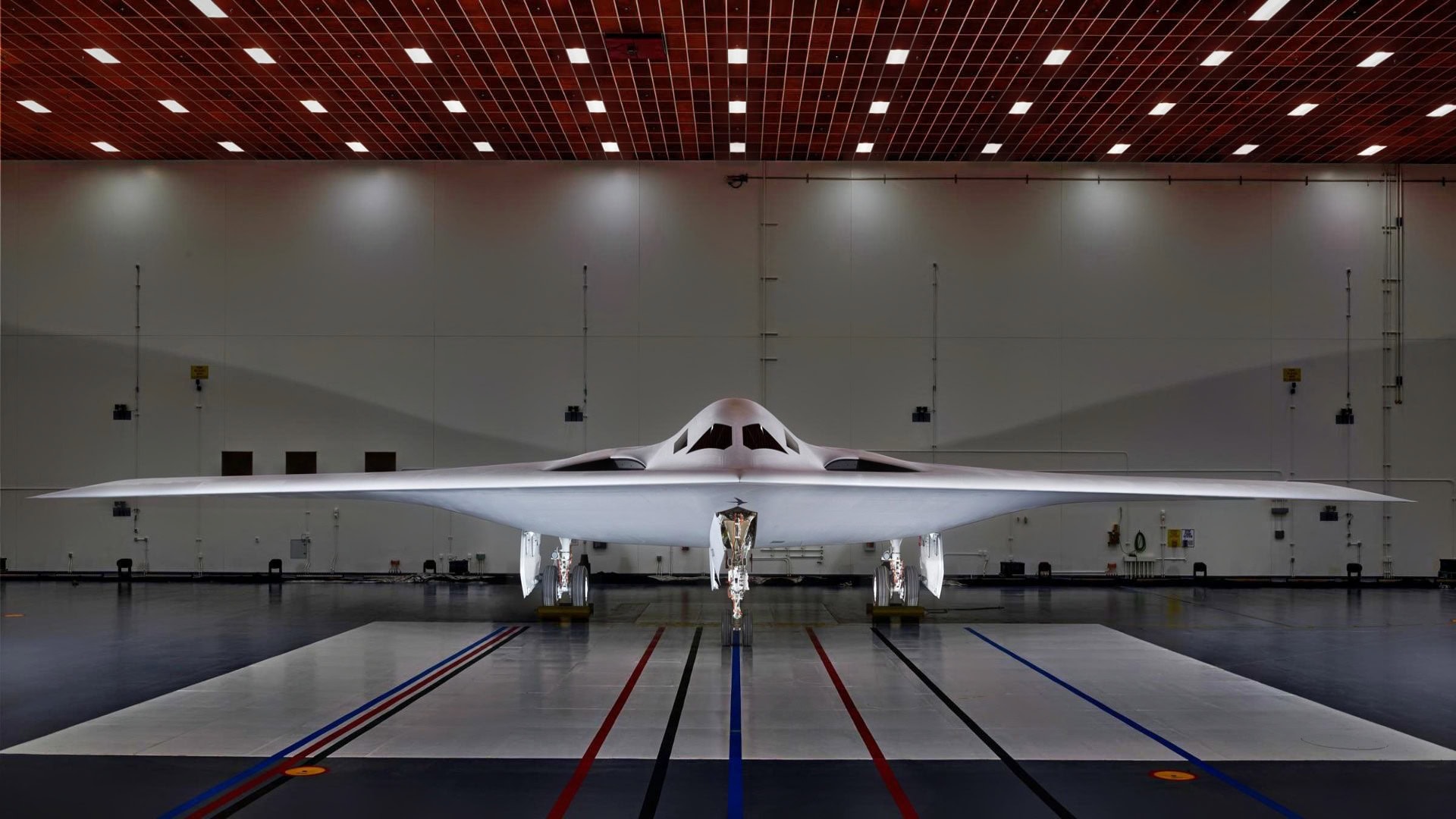
B-21 Raider U.S. Air Force. Image Credit: U.S. Air Force.
In fact, right now, the U.S. has more stealth aircraft of different types in testing than China has ever fielded, with somewhere between a half dozen and a dozen publicly disclosed platforms, not counting those tucked away behind classified lines of accounting.
So, let’s run through a list of the new stealth jets Uncle Sam has started flying over the past five or six years.
And we’ll start with the big-daddy of ‘em all:
B-21 Raider
The B-21 Raider is a heavy payload stealth multi-role bomber equipped with the most advanced Intelligence, surveillance, and reconnaissance suite ever affixed to a combat aircraft, allowing this extremely stealth bomber to serve as one of several central nodes in modern kill webs, coordinating the efforts of a wide variety of airborne and even surface-based sensors, platforms, and weapon systems.
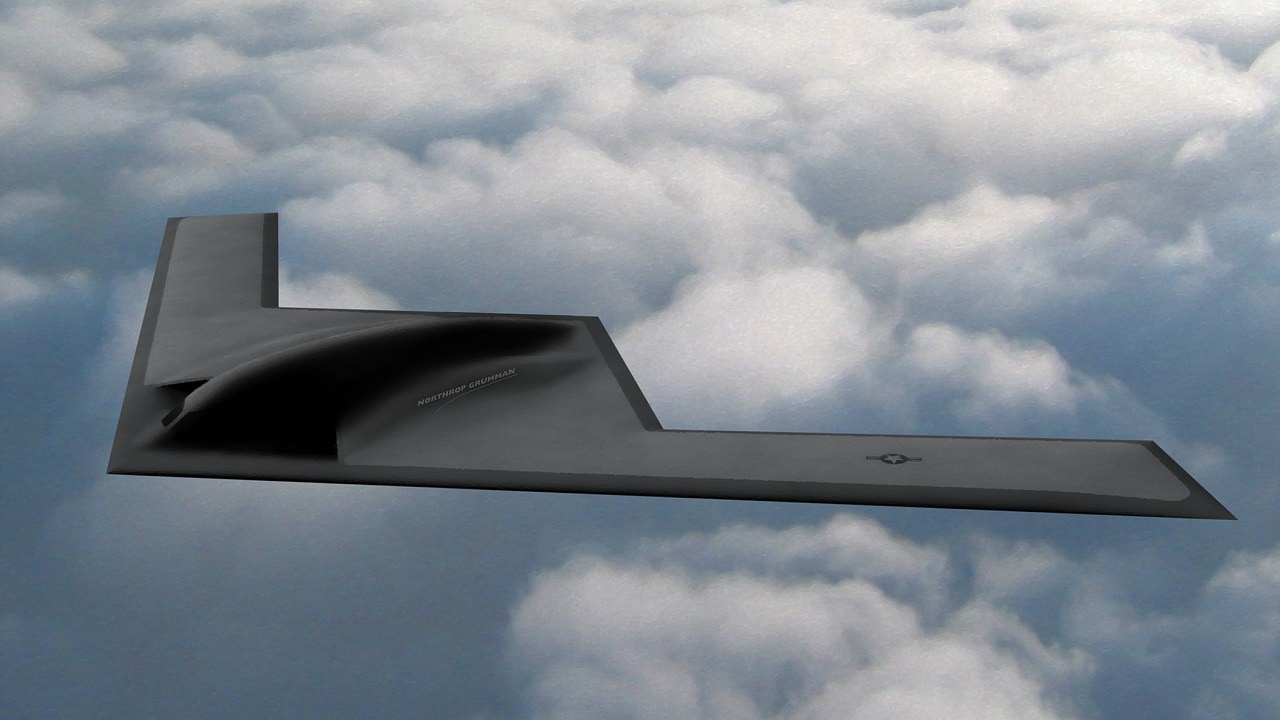
B-21 Raider bomber.
As we’ve covered in the past, the F-35 may be a quarterback in the sky, but the B-21 aims to be an offensive coordinator. In fact, the Air Force is even considering assigning the B-21 some portions of the air superiority role, highlighting the broad capability set this bomber brings to bear.
The B-21 made its First Flight in November 2023.
NGAD and F/A-XX Prototypes
Starting as a classified X-Plane program that saw more than a billion dollars invested into the development of three flying prototypes, at least one of these jets was not only flying but already setting performance records by 2020, at least according to Air Force officials.
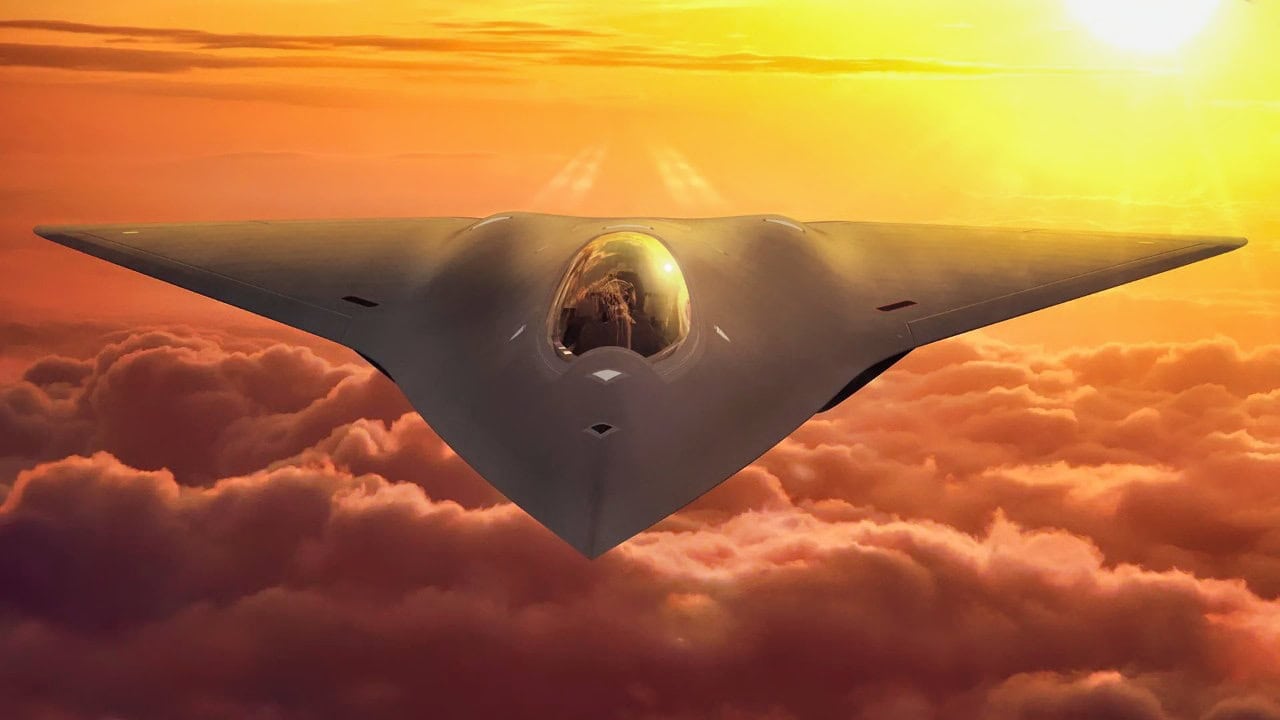
NGAD Fighter via Lockheed Martin.
These aircraft are the basis for both the Air Force’s Next Generation Air Dominance (NGAD) fighter that’s currently on hold, and the Navy’s F/A-XX fighter that’s still moving ahead at full-steam.
These jets are expected to offer a significant increase in stealth, range, payload, and electronic warfare capabilities over today’s top-tier fighters like the F-22 and F-35.
General Atomics XQ-67A and the Gambit Series
The XQ-67A was originally developed for the Air Force’s Off-Board Sensing Station (OBSS) program, but this platform went on to become the basis for General Atomics’ new Gambit series of combat drones that share common core elements like landing gear and flight control systems to make it possible to field a wide variety of aircraft with different stealth and performance characteristics at a much lower price-point. A new variant of the XQ-67A is currently one of two Increment One platforms being tested as a Collaborative Combat Aircraft to fly alongside advanced fighters as stealth air-to-air missile trucks.
The XQ-67A made its first flight in February 2024.
Northrop Grumman Model 437 Vanguard
Another stealth jet competing to serve as a next-generation drone wingman, this aircraft has a wider wingspan than the F-35A and has an unrefueled range of more than 3,500 hundred miles. The Model 437 also serves as a testbed for low-cost, high-speed development, with Northrop Grumman and its subsidiary Scaled Composites conducting a great deal of its design and initial testing in an entirely digital environment, which likely has a lot to do with how incredibly fuel-efficient the aircraft already is.
The first Vanguard prototype has a cockpit for pilot testing, but subsequent iterations will include uncrewed drone variants.
The Model 437 Vanguard made its first flight in August 2024.
Kratos XQ-58 Valkyrie
Another extremely low-cost stealth drone meant to support crewed fighters in combat, the Kratos Valkyrie can be launched from a single point via rocket, eliminating the need for long, well-manicured runways for take-off.
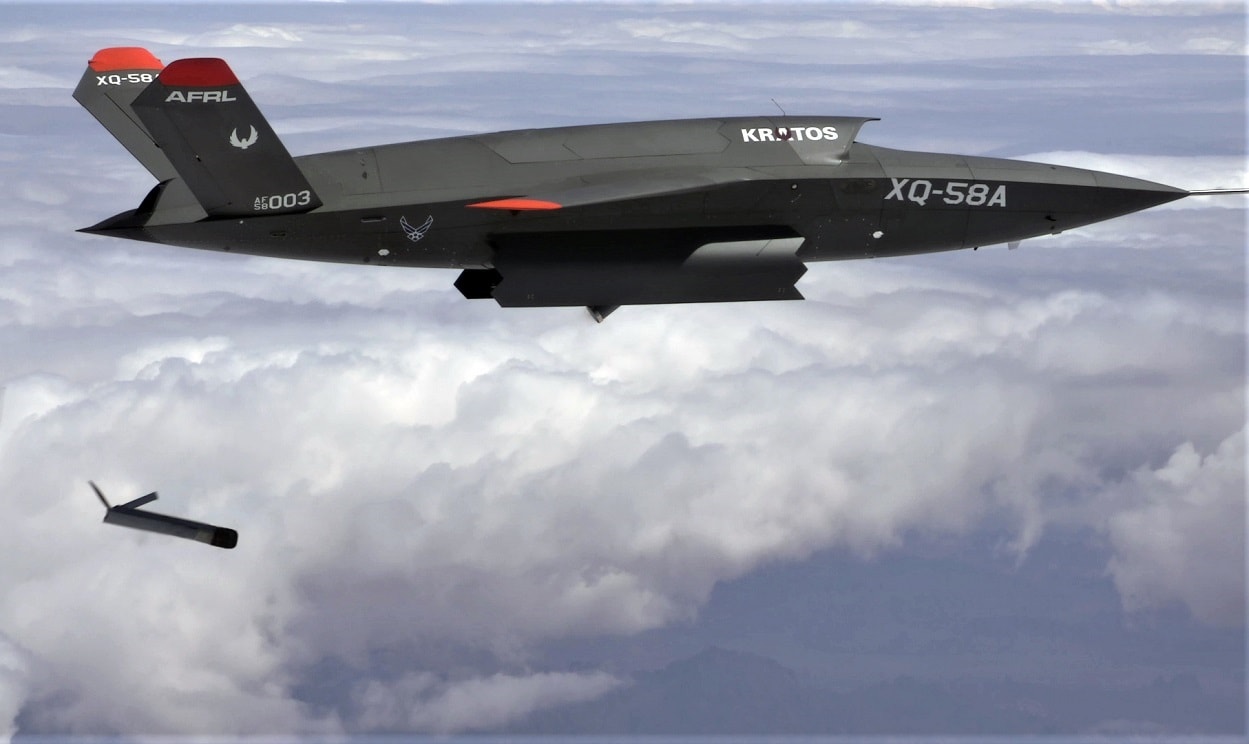
The XQ-58A Valkyrie demonstrates the separation of the ALTIUS-600 small unmanned aircraft system in a test at the U.S. Army Yuma Proving Ground test range, Ariz., March 26, 2021. The test was the first time the weapons bay doors have been opened in flight. (U.S. Air Force courtesy photo)
Envisioned as a borderline-disposable asset, the Valkyrie can carry small diameter bombs internally to engage targets with an unrefueled range of 3,500+ miles, and only costs about the price of a single Tomahawk cruise missile to replace.
There are currently electronic warfare variants of this platform in testing as well.
The Valkyrie made its first flight in March 2019.
Anduril Fury
Originally envisioned as a Red Air fighter drone meant to simulate the performance characteristics of adversary 5th generation fighters in training exercises, this aircraft was designed by Blue Force Technologies before the company was purchased by Anduril.
Since then, Andurul has given the aircraft a significant infusion of artificial intelligence and autonomy systems, making it into a fully-fledged combat aircraft instead. Various testbeds for this jet have already flown, and the new fighter wingman version is expected to start flying this year.
Boeing MQ-25 Stingray
Originally designed to serve as a low-observable, carrier-based ISR and strike platform for the U.S. Navy, the program pivoted to instead create the world’s first carrier-based drone refueling tanker, extending the range of Super Hornets and F-35Cs without risking America’s larger, non-stealth tanker aircraft. At 51 feet long, with a 75 foot wingspan, this stealth jet is larger than an F-35C, and can deliver 16,000 pounds of fuel hundreds of miles from the carrier.
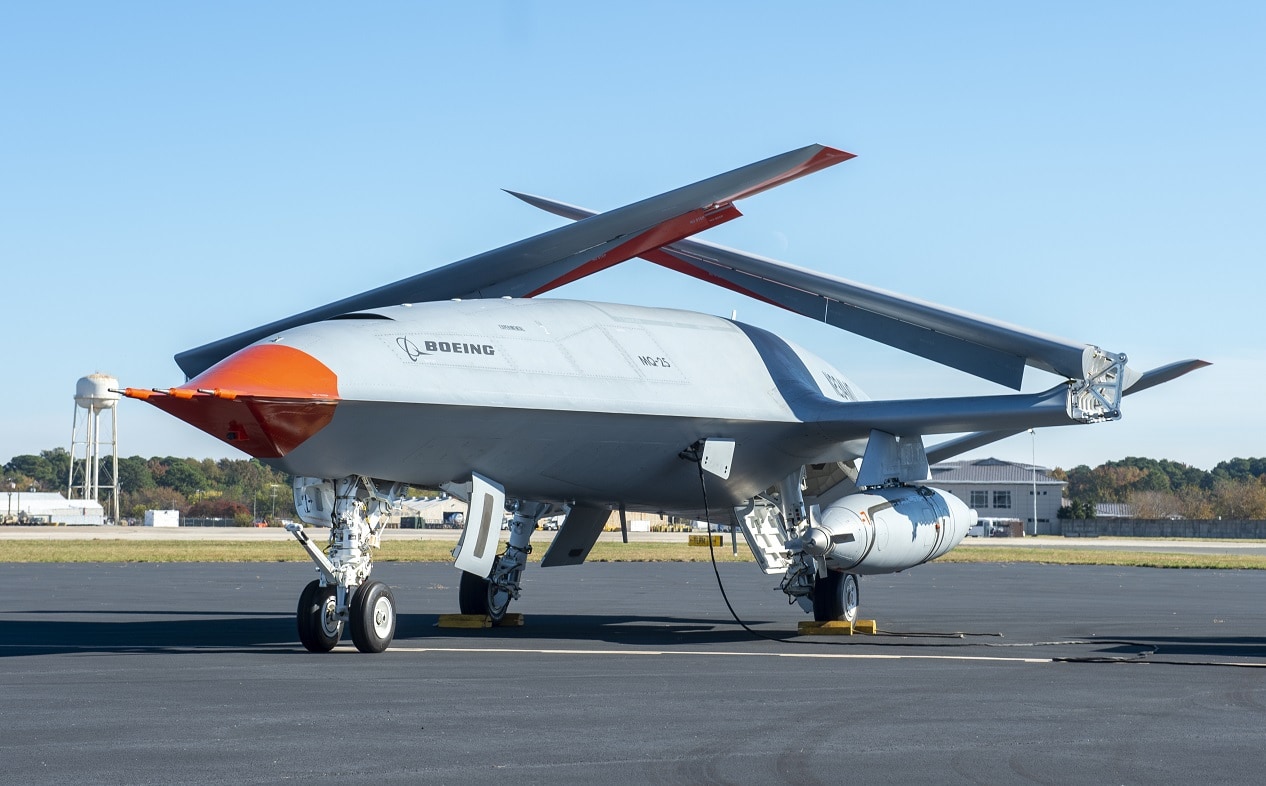
NORFOLK, Va. (Nov. 10, 2021) The U.S. Navy and Boeing conducted ground testing of the MQ-25 Stingray at Chambers Field onboard Naval Station Norfolk, Virginia. The MQ-25 Stingray is an unmanned aerial refueling aircraft. (U.S. Navy photo by Mass Communication Specialist 2nd Class Sam Jenkins)
In the future, the MQ-25 may even carry anti-ship missiles like the AGM-158 LRASM, aside from its refueler pod.
The MQ-25 made its first flight in September 2019.
About the Author: Alex Hollings
Alex Hollings is the editor of the Sandboxx blog and a former U.S. Marine that writes about defense policy and technology. He lives with his wife and daughter in Georgia. This first appeared in Sandboxx.

